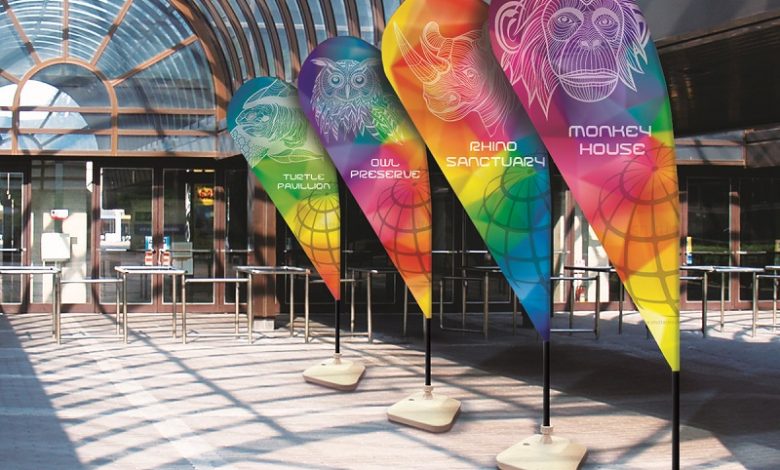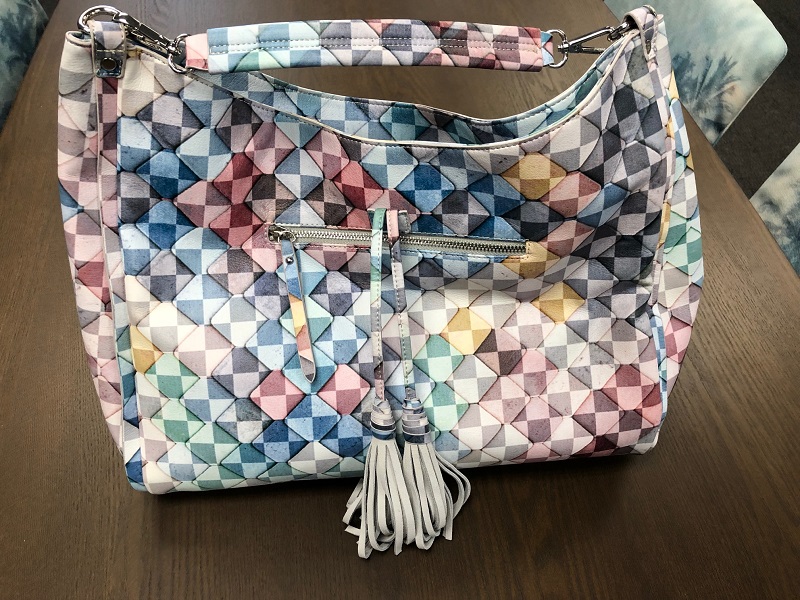Getting Equipped for the Textile Market
Find out what to look for in a digital textile printer
Digital textile printing is a hot topic among PSPs these days, and for all kinds of reasons. Chief among them: digitally printed textiles are trendy, flexible, and profitable. In addition, increased competition means that print service providers (PSPs) are seeking to provide a variety of customized solutions and a “one-stop-shop” experience. Finally, many shops are looking for ways to respond to consumer requests for eco-conscious or greener solutions.
Industry analysts have been following the rapid growth in the digital textile market and are predicting it will continue. Allied Market Research projects that worldwide, the digital textile market will reach $3.9 billion in 2022, with a compound annual growth rate of nearly 18% from 2016 to 2022. While Europe has the lead in the market, the U.S. is catching up.
All of these factors mean the digital textile market is heating up. Whether you are thinking about branching out into customized T-shirts and bags, or soft signage and event graphics, there are plenty of printer options, at a range of price points, to consider.
Try before you buy
Most shops that are considering entering the digital textile market are interested in offering textile products that complement what they are already doing. For example, a PSP with digital textile capability can offer their restaurant clients not only vinyl signage but also customized drapes and tablecloths.
Margins on textile products are typically very attractive, often making a “try before you buy” option workable. As Lily Hunter, product manager for textiles and consumable supplies for Roland DGA says, “With textiles, it’s not as much of a race to the bottom on pricing as it is with some other products.” Soft signage, for example, can be priced in the range of $12-$18 per square foot.
One way to test the waters is to outsource your textile printing until you have enough demand built up among your clients to justify investing in your own digital textile printing equipment.
“With existing clients that trust you and your advice, you are in a great position to show them new textile products that will help them market their businesses,” says Hunter. “Show them printed textile samples and ask them what they think. Because these products have a different look and feel, offering them can really set your shop apart from the competition.”
When you are ready to invest, there are several different types of printers to consider. Which one you choose will depend a lot on what products you are aiming to offer, the expected durability of those products, and the quantity of each product you’ll need at one time.
Eco-solvent solution
With the versatility of today’s digital printers, many shops can enter the digital textile market by employing their existing printing technology. Using transfer film and purchasing a heat press will allow you to transfer your designs directly to fabrics. Applications for heat-transferred eco-solvent printed designs include apparel, accessories, and décor.
Manufacturers are also responding to the growing interest in textiles by developing specially coated fabrics specifically made for soft signage applications. For example, Roland has recently launched its SoftSign Woven Polyester (ESM-SSWP2) coated fabric, which is designed for printing with eco-solvent and UV inks on the coated side, or sublimated inks on the uncoated side.
UV printers
If your shop has a UV printer, you can easily print on fabrics for décor and soft signage applications. Hunter advises, however, that textile printing options like dye-sublimation are better for wearable textiles since UV inks are not as wash-durable as other inks.
UV printers can also print on other “fabric-like” substrates ranging from soft vinyl to vegan leather, allowing PSPs to offer options that appeal to a wide range of customer needs.
Dye-sublimation printers
The faster production speeds offered by dye-sublimation printers and the increased durability of sublimated designs make dye-sublimation an appealing alternative for large production runs. The inks offer excellent rub resistance, making dye-sublimation a good option for interior décor and furniture.
In addition, fabric manufacturers are developing new polyester fabrics that imitate other textiles such as linen, silk, and velvet. These fabrics broaden the appeal of sublimation for products beyond traditional athletic apparel and swimsuits.
Hunter advises that, as a good rule of thumb, the cost of a dye-sublimation printer should roughly match your investment in an eco-solvent printer. However, dye-sublimation is a “two-step” process also requiring the purchase of a heat press, which can add another $4,000-$75,000 to the total cost.
According to John Whitt, owner of Just Vision It in Lone Jack, Missouri, dye sublimation is “the up and coming new kid on the block.” A long-time expert screen printer, Whitt has applied Six Sigma operational management skills to transform his business and many others over the years. For the past six years, he’s devoted all his efforts to building Just Vision It, a wholesale custom fabricator of soft signage, tradeshow booths, event marketing, home décor and SEG framing systems.
While Whitt believes that dye-sublimation is the way of the future, he strongly urges PSPs to research their options carefully before entering the market. Today’s dye-sub printers offer high-quality, fast output production, however the production process can be affected by a wide variety of environmental factors (i.e., temperature humidity), and even the quality of the material you are using. “The science of dye-sublimation is easy, and the craft is familiar with belt pressure, air pressure and speed. But color management takes a lot more time and attention than you might think,” he says.
Direct-to-garment (DTG) printers
Direct-to-garment printers are a great option for PSPs looking to print on light or dark cotton fabrics, and, like other types of digital textile printers, they range in price and speed.
DTG printers can produce an average of 20 to 50 white shirts per hour. However, dark shirts take more production time and require an additional pretreatment step. Like dye-sublimation, direct-to-garment printing also requires an investment in a heat press. DTG users most often opt for a smaller clamshell heat press, which costs less than the larger calendar presses more typically used with dye-sublimation.
Hunter notes that depending on your required output, there are smaller, more affordable DTG printers which can be a good option for an initial purchase.
Multifunctional printers
Manufacturers are beginning to offer alternatives for companies that want a direct-to-fabric printer, but would also like to have the option to dye-sublimate and print to transfer paper for a wider variety of application opportunities like mesh flags, banners, and soft signage. Some printers also allow for rigid sign, merchandise, and hard surface customization.
The range of printing options offered by new multi-functional printers is appealing to PSPs who are trying to “read the tea leaves” on which applications will be most in demand. “Now PSPs can do apparel, décor, and rigid substrates with one printer. The options are increasing for production devices that offer this enhanced level of flexibility,” says Hunter.
A few words to the wise
When considering an investment in any new printer, Hunter advises taking the time to talk with different dealers and manufacturers before making any purchase. She also recommends looking very closely at the warranty and support available. “Especially when purchasing your first textile printer, it’s important to have good support to ensure you are producing the best quality prints and that your equipment is up and running when you need it,” she says.
Additionally, Hunter reminds those in the market for a new digital textile printer to, “look beyond the sticker price.” Often, the listed price does not include the cost of the take-up unit, RIP software or inks.
That said, it’s an exciting time to be entering the textile market. “We are seeing lots of out-of-the-box thinking,” notes Hunter. “Clients are running applications ranging from fabric wall coverings and printed carpets on up to cut and sew apparel.” With so many options out there and some careful research, a PSP seeking to enter this market will be able to find a digital textile printer that expands the spectrum of products offered and positively impacts the bottom line.


